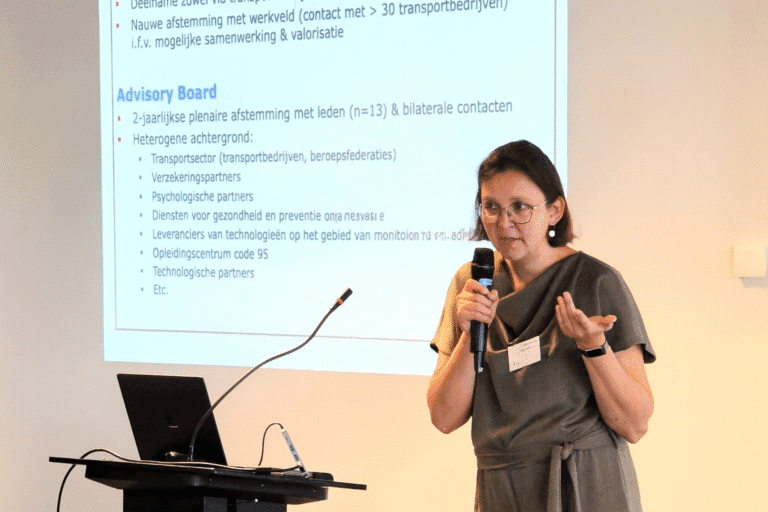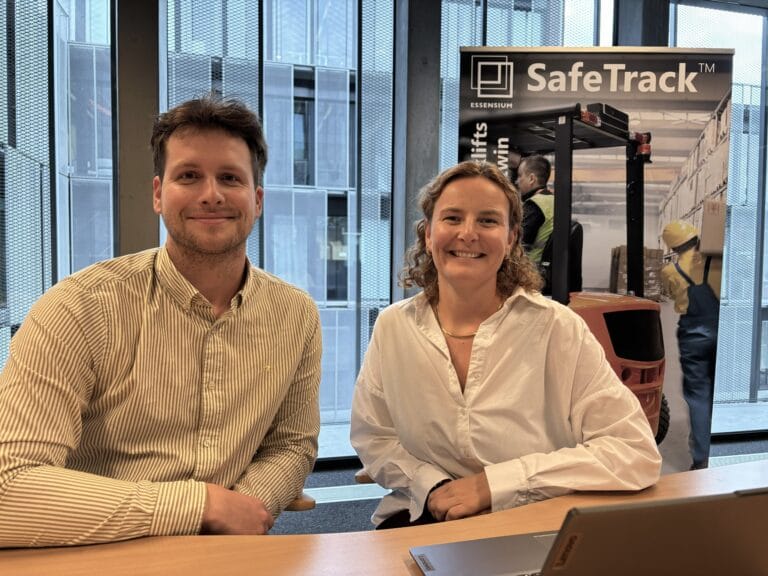“Do not overestimate applications of humanoid robots in logistics” Thomas Vercammen (Toyota Material Handling Belux)

Humanoid robots are very cautiously taking their first steps in the logistics sector. A number of major players are already experimenting with this technology. Thanks to their human form and their learning ability – courtesy of AI – they can already lift boxes, sort and move through complex warehouses autonomously. Still, they will have to wait another five to 10 years for a breakthrough. Thomas Vercammen, Logistic Automation and Innovation Manager at Toyota Material Handling Belux, explains what tasks these robots can take over and what challenges still lie ahead.
Humanoid robots have received a lot of attention in recent years because they (will) become more versatile than the robots already in use today. AMRs and AGVs move goods, pallets and containers. Goods-to-Person systems bring racks or totes of products to order pickers. Static robotic arms (Pick-and-Place robots) retrieve small items from bins and can pack them. Robots can also palletise, sort or even cooperate with humans (cobots). However, these robots are ‘dedicated’ and can only handle one or a limited number of tasks.
Today, there are about ten humanoid robots in development worldwide, some of which are already ‘quite advanced’. “The fields of application being explored are many: the household, healthcare, hospitality, industry as well as (intra)logistics,” says Thomas Vercammen.
By the way, logistics is an environment where it is ‘easier’ to deploy a humanoid robot, in the sense that a warehouse or a factory hall is a ‘structured’ environment where a limited number of tasks are performed. A home, restaurant or care centre, on the other hand, is an ‘unstructured’ environment where the layout can vary greatly, there are more obstacles (such as doors, thresholds and stairs) and many people walking around. Logistics, incidentally, is an attractive sector to deploy humanoid robots because of the repeatability of many tasks and the widespread staff shortage in warehouses.
Not yet an industrialised concept
In the sector, a number of players are already more or less advanced in development, such as Agility, Approtronik, Figure AI, Fournier, Tesla or Boston Dynamics. Some humanoid robots are already being tested in pilots by GXO, Amazon or DHL.
“Who is furthest along in development is hard to say,” says Thomas Vercammen. “Tesla says it will soon be ready with an industrialised design, but it won’t be the first time that company has effectively brought a product to market only years after announcing it. Boston Dynamics, on the other hand, says it will present a market-ready and tested version at Logimat 2027. I expect them to stick to the date”.
As a sidenote, Boston Dynamics, a high-profile US developer – with whom Toyota is collaborating, by the way – is already commercialising Stretch, a mobile robotic arm that can autonomously handle boxes and is designed to automate loading and unloading processes. The company is also developing Atlas, an advanced humanoid testing platform for mobility, balance and human movement. Thus, combining the research in Stretch and Atlas could potentially give the company a ‘pole position’.
Applications expecially in processes that are difficult to automate
In theory, a humanoid robot in logistics could – in time – take over most of a human’s tasks. “How many tasks depends primarily on their cost. I will come back to that. Speed, repetition and expected precision in operations also play a big role in determining those tasks,” states Thomas Vercammen.
“Many robots today can already take over numerous tasks at a relatively low cost. Technologies such as AGVs, robotic arms, cobots, 3D shuttles and automatic cranes have reached a high level of maturity. Before considering the deployment of humanoid robots, it is crucial to first analyse processes and identify where Toyota’s concept of ‘muda’ (waste or ballast) occurs. Which processes are not being automated efficiently enough with current technology? In addition, in which cases can humanoid robots actually help provide a solution?”
Loading and unloading, the holy grail
So it comes down to first looking at the remaining processes that are difficult to automate today. “And then you quickly end up with automatic loading and unloading of trucks and containers. That’s pretty much the ‘holy grail’. Loading and unloading docks are places where large volumes converge and where trucks stand in front of them for as short a time as possible. They need to bulge and stand still as little as possible.”
“The number of quays is also often limited. So fast loading and unloading is the message. It is difficult to automate this because the quality of the floor in and in front of the containers or trucks is variable (or dirty) and the quality of the stacking on the pallets is also inconsistent. During driving, for example, it can deform. A human can deal with that, but an automatic transpallet cannot. With deep learning AI, one can train a humanoid robot to deal with those bad pallets,” he states.
“Loading and unloading boxes in a container that are not palletised is also difficult to automate,” Thomas Vercammen adds. “Incidentally, palletising often causes underutilisation of loading space. There are companies studying how to load goods into a truck without resorting to pallets or, like IKEA, to increasingly thinner cardboard pallets.”
“For example, it would be possible to load white goods directly onto the floor, with a robot picking them up and moving them. Remember that – given the proportionally high logistical cost of a fridge or dishwasher of say 500 euros – interim storage is often undesirable. With white goods, people try to avoid rack storage, which requires a pallet, and favour cross-docking. Weight can be an issue – although robots such as the Atlas seem to suffer less from this – but there are also many lighter products that qualify to be transported non-palletised, such as insulation materials.”
Cost will be crucial
“To remove inefficiencies from logistics flows, humanoid robots may offer a solution. However, I am very sceptical when some logistics consultancies say that by 2027, 10% of robots will be humanoid,” says Vercammen. “Remember, we are still at a ‘Proof of Concepts’ stage today. However, we will see the first meaningful ‘use cases’ – including in Belgium – in the next five years. We should keep our feet on the ground and not overestimate the future applications of humanoid robots in logistics.”
According to him, the biggest challenge will be cost. “So much money goes into R&D that the first ones should easily cost 200,000 to 1 million euros. If a robot costs 150,000 or 200,000 euros, the application areas will be limited to a few narrow niches. Only when the cost hovers at 30,000 or 50,000 euros a significant effect can occur.”
Computing power is a challenge
Incidentally, not only the acquisition cost plays a role, but also the utilisation cost. Humanoid robots need a lot of computing power, which requires energy and therefore has a cost. In the first generation, the focus was mainly on physical sensors, vision technology and motors. Today, the main focus of rewinding is on chips, software and – especially – AI.
“The interaction between the software and a lens, for example, allows the robot to quickly identify what it needs to treat, but that is only the basics. He needs to know – in real-time – how to pick up the box, where to put it, whether there are people around him, and so on.”
“That can be taught to him, with the support of AI, but, as mentioned, that requires enormous computing power and thus a lot of energy. He also needs to be at least as fast as a human. Especially since computing power and speed are crucial, it is difficult to achieve a correct ROI. Even if a humanoid robot can theoretically handle many tasks, in those circumstances it is difficult to determine in which use cases its use is justified,” he admits.
Nevertheless, he nuances, “If we see how quickly AI evolves and as a result learning processes can be shortened, implementation costs could quickly fall.”
Legislation and energy are also a challenge
Apart from cost, there are other hurdles to overcome. One is legislation. “Humanoid robots are made to work with and among humans, and then, of course, the question of safety arises. One can stuff the robot with sensors to increase it, but then one increases energy consumption even more. That has an impact on battery capacity. What if, despite all the measures taken, a robot injures a human? Safety is not an insurmountable problem, but it will still require a lot of thought,” Thomas Vercammen states.
Energy is therefore also a challenge. It is needed not only to make the robot move, but also to keep the computing power high. “Then poses the question of the size of the batteries. If they only provide energy for a limited time, this has an impact on the volumes the robots can handle, while high volumes are an essential condition for a favourable ROI.”
Conclusion
Humanoid robots are gaining attention as a possible solution to labour shortages and logistics processes that are difficult to automate today. The biggest opportunities lie in loading and unloading trucks and containers, a process that is often done manually today. Yet there are major obstacles: the high cost price, energy consumption, the need for computing power and safety in mixed environments. Thomas Vercammen does expect meaningful pilot projects and possibly first ‘use cases’ in the next five years, but warns against overestimation. Only when the cost drops and the technology matures further will a wider breakthrough in the logistics sector be possible.
Toyota Material Handling
Want to know more about our Steering Partner? Press the following link to learn all about Toyota Material Handling.



